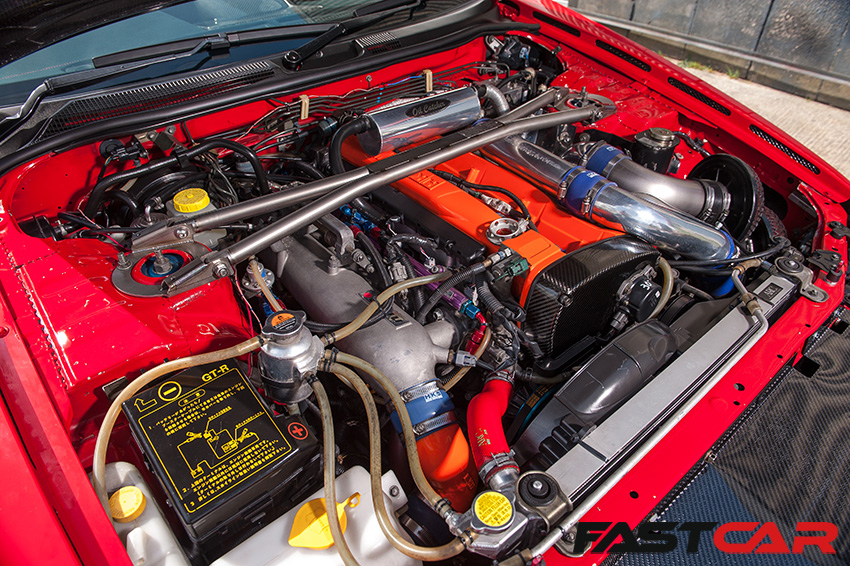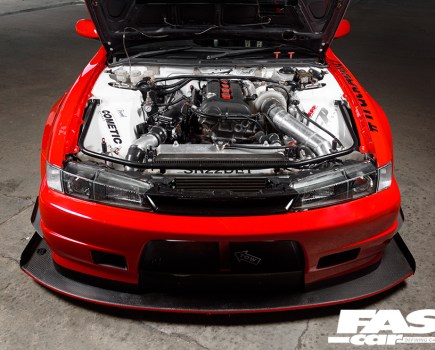Most engines become legends, but the RB26DETT was born a legend; here’s how to tune the iconic Skyline GT-R motor from as low as 400bhp right up to 2000bhp+ advising on the weak spots and strong points of the RB26.
Most engines haven’t always had this kind of worship in the car tuning scene. In fact, most spent their early years being lightly modified or even ignored.
One exception to the rule is the Nissan RB26DETT engine. It was a powerplant that was making massive power and obliterating the opposition almost as soon as it arrived. It was an instant legend before most people realized what it was.
Designed as a race engine to replace the successful RB20DET-R in the Group A Touring car championship, the RB26 was a ground up rework of the RB straight six engine formula. It featured a beefed up block, an all-new cylinder head with solid lifters as standard, short stroke high revving 2.6ltr design, independent throttle bodies, huge front mount intercooler, and of course, twin turbochargers. Nissan wasn’t messing about, they read the Group A rule book and built the RB26 to dominate.
While initially intended for the R32 GT-R and Group A touring car racing, the engine was such a success it continued with very little changes right up until 2002. This saw out R34 GT-R production. Even today these engines are still competitive in all forms of motorsport. At the time of writing, the car that holds the 4WD quarter mile world record features an RB26DET-based engine. It runs almost 220mph in the quarter mile.
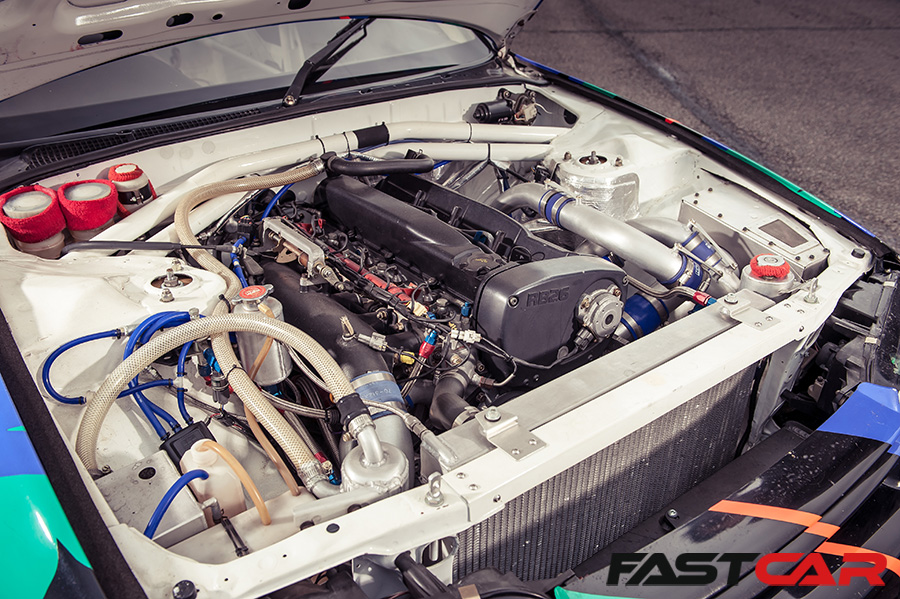
RB26DETT Tuning basics
While the official quoted power of the RB26 was 276bhp, it’s always been accepted that they made more like 300bhp. Even at this level they were barely breaking a sweat. As a result, more power is very easy to achieve.
The first steps on tuning a Skyline GT-R is to give it a good service and health check. Ensuring the motor is running as intended will avoid costly mistakes down the line. Next up, it’s a full turbo-back exhaust system and air intakes.
While this is a very basic first step, the reduced restriction of a free flowing exhaust actually increases boost pressure slightly on its own. If you’re running the factory ceramic turbine wheel twin turbos they are likely very old and very fragile by now. Therefore, about 12psi boost is considered a safe limit if you intend to keep them under your hood.
If you’ve got rebuilt turbos with metal turbine wheels, or like living dangerously, 14psi is generally fine on the standard ECU map. This sort of setup will get you in to the mid to high 300s in power, with a healthy increase in torque too. Beyond that, you’re getting close to the limit of various factory parts; although hundreds of horsepower away from many others. Now it’s time to get a little more in-depth.
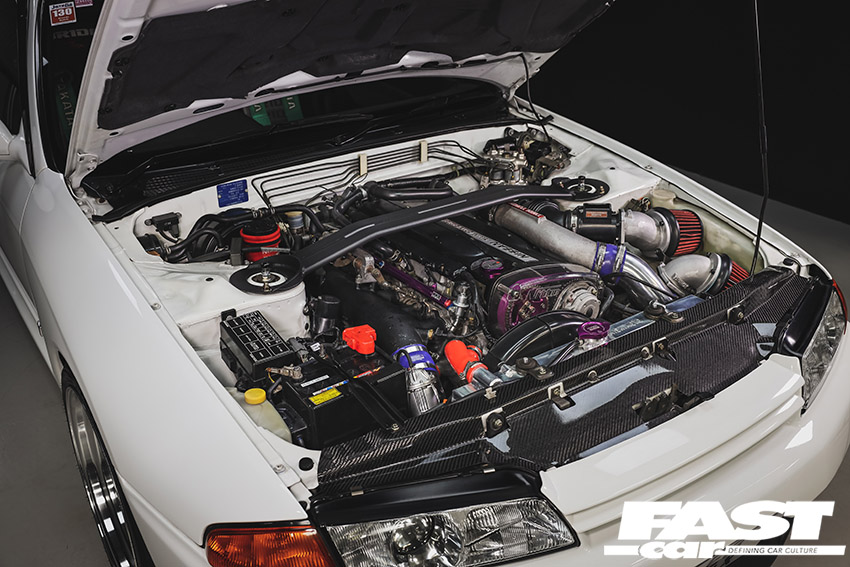
Know your limits
Due to the RB26DETT being built as a Group A homologation special, the rules dictated many parts used in racing had to be fitted to the standard road car. Because of that, these parts are freakishly capable for a car rated at under 300bhp from the factory. That’s because they’re actually made to handle 600bhp+ in race use.
While some standard parts aren’t rated to huge amounts, they’re certainly in the minority on this engine. The fuel pump, injectors, stock turbos, and MAF sensors are all limited to the 400-450bhp mark.
The standard intercooler is a massive front mount. It’s arguably the best standard intercooler of any production car. You really only need to change this if you’re going for huge power, or if it’s damaged.
The inlet system is a complex individual throttle setup. While the plenum is known for not having the most equal airflow between cylinders, overall it is incredibly high flowing. The basic head and block design are fantastic and more than capable of 1000bhp+ with supporting mods.
The standard exhaust manifolds, with porting, can make serious power numbers when mated to suitable turbos. The standard bottom end internals are also fantastically strong. Good condition engines have been proven reliable at 600bhp+ as long as it’s got a good tune. Don’t forget, even the strongest engine internals will be destroyed in seconds with a bad tune!
Short nose crank
The final thing to note is early RB26DETTs have a short nose crank. The cranks are as strong as any other, but the part that drives the oil pump is very short and only engages a few millimeters of the pump. This can lead to a damaged pump and a very broken engine. Running either a long nose crank or getting an extended crank collar fitted is vital.
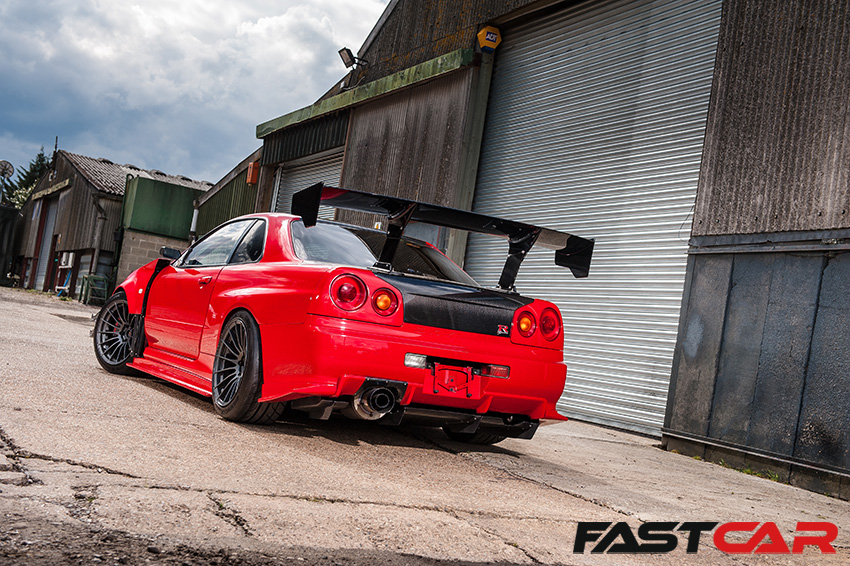
Exhaust upgrades for the RB26DETT
When it comes to RB26DETT performance exhausts, a big factor is the downpipe. The design of the downpipe will depend on whether you’re sticking to the twin turbo setup or going big single. If sticking to the factory position twins then it’s the Japanese tuners you want to visit. All the big names produce quality high flow downpipes and turbo outlet elbows. A special mention goes to the Tomei elbows and titanium downpipes, they are our pick of the bunch. As off the shelf RB26DETT exhaust systems go, we’d aim straight for the 3.5in systems to maximize flow. Again, the Tomei titanium 3.5in system is top of the tree.
For big power setups, certainly 700bhp plus, you’d really benefit from bigger downpipes than the 2.5in off the shelf kits for the twin turbo setups. Opting for a 4inch main exhaust system regardless of your turbo setup is worthwhile, too. At this sort of spec the exhaust will be fully custom. This also enables you to choose the design, amount of silencers, and so on. Bear in mind, the really big power RB26s opt for custom five inch exhausts!
Be sure to check out our guide to the best exhaust brands in 2023.
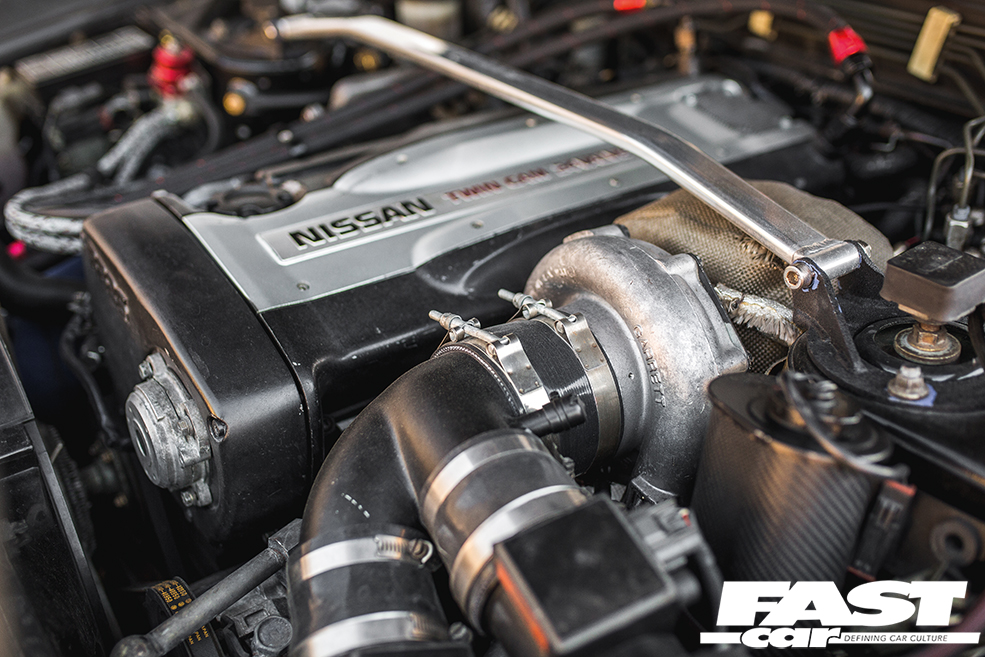
RB26DETT Turbo upgrades
Over the years almost every turbo combination imaginable have been fitted to the RB26DETT engine. Go back to the earlier days of RB26 tuning and factory position twin turbos were favored for the people who wanted maximum response. Single turbo setups were reserved for big power. Nowadays, thanks to a much wider turbo choice and technology improvements, a good single turbo setup will respond at least as well as twins. As a result, it’s down to personal preference and engine aesthetics.
While it may be much more expensive and complex, we can see the attraction of making an big power RB26 that looks standard under the bonnet. With products like the factory-look high-flow Tomei cast stainless turbo manifolds; as well as the ATP GTX2971R drop-in turbos, you could build a setup capable of 1200bhp yet looking almost stock.
That being said, single turbo setups are the go-to upgrade these days on the RB26DETT. You’ve got manifolds and full turbo kits available from twin scroll setups for maximum response and v-band manifolds for the easiest fitment and lightest weight. For the drag monsters out there, 6boost produce ‘ProMod’ manifolds in either V-band or T6 flange. These mount the turbo further forward in the bay to allow for gigantic turbos and downpipes to be fitted.
The smallest viable single turbo is something like the G30-660 for maximum response The gigantic 98mm ProMod turbos propel the fastest RBs on the planet. When it comes to turbos, the world really is your oyster.
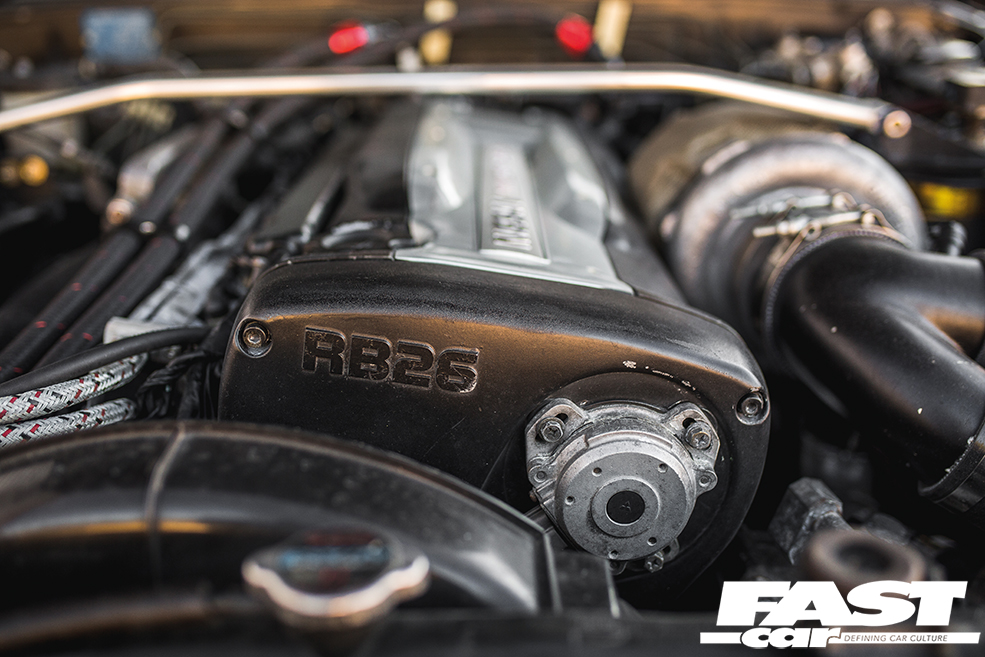
ECU upgrades for the RB26
Unlocking the potential of the RB26DETT engine is the job of a good aftermarket engine management system. Thankfully they are well catered for in that regard.
While aftermarket ECU selection is relatively straight forward, the ultimate setup would be a complete wiring harness available from Haltech or Wiring Specialities. This will eliminate any issues old, damaged wiring can cause. A PRP R35 GT-R coil conversion kit will eliminate the troublesome RB26 coil and ignitor setup. An PRP ‘Race Series’ trigger kit gives the engine a proper crank and cam timing signal. The original cam-only setup is known to give ignition timing issues on highly tuned cars.
With the RB26 being a long engine, there can be some serious variation in airflow on boost between the first and last cylinders. This needs to be taken in to account within the ECU map to make sure you don’t run lean and blow the head gasket or melt pistons. While RB26 knowledge and experience can help with this, if the ECU is running individual EGT sensors in each runner of the exhaust manifold, it can indicate if any cylinders are running lean. It will also the ECU to be programmed to automatically add fuel to any cylinder that gets noticeably hotter than others.
While RB26s are incredibly strong, fueling or ignition timing issues can quickly make even the strongest engine fail. With these engines commanding high prices, it really does pay to have every possible engine safety feature activated and mapped in to the ECU. This will give it its best chance at reliability, no matter how hard it is used.
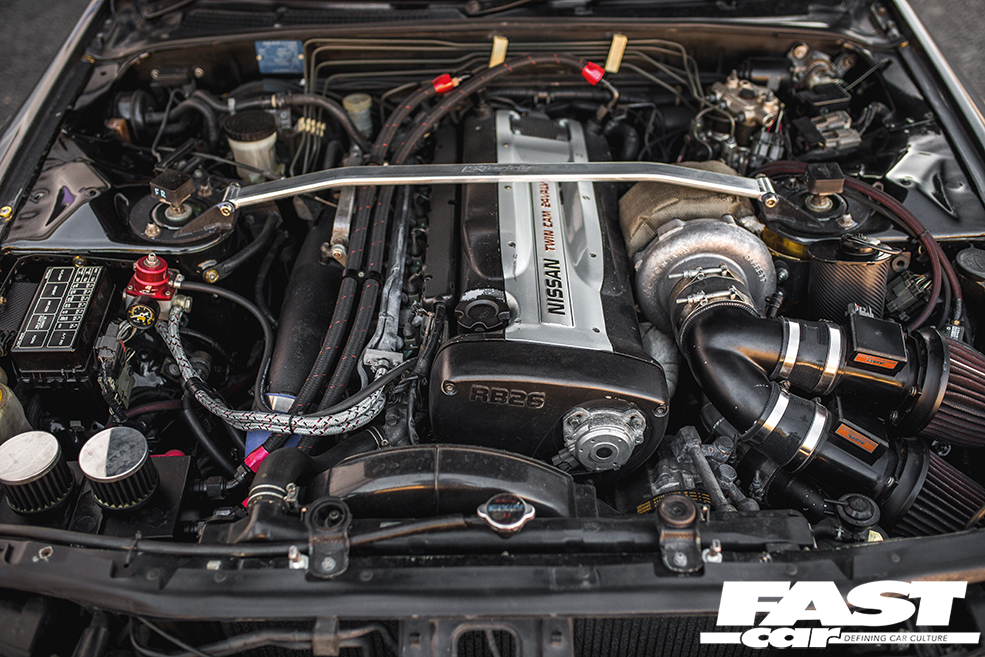
Inlet manifold upgrades
While the RB26s factory 6 throttle inlet is capable of flowing enough air for over 1000bhp, that’s not to say it can’t be improved upon.
The first option is sticking with the individual throttle bodies. This gives you a choice of an even higher flowing plenum from Plazmaman or Greddy. You can also opt for the setup that seems to make the most sense for the ITB inlet, which is the Nismo plenum. This inlet is the same one used on the Nismo Z-Tune. It’s focused on equal airflow to each cylinder and maximum throttle response.
The second option is to remove the complex factory setup and replace it with a conventional single throttle inlet manifold design. Hypertune and Plazmaman make the two of the most popular RB26 inlet manifolds at the moment. Both products have the option of running 12 injectors. This is ideal for big power drag cars running methanol, or if you want to run a dual fuel setup. Both have billet inlet runners, but the Hypertune drag inlet steps it up a notch by being fully billet. While certainly expensive, it looks incredible.
Another advantage of a single throttle is it allows an easy conversion to a drive-by-wire setup. This makes things like anti-lag, launch control, and advanced traction control strategies easy to implement within the ECU.
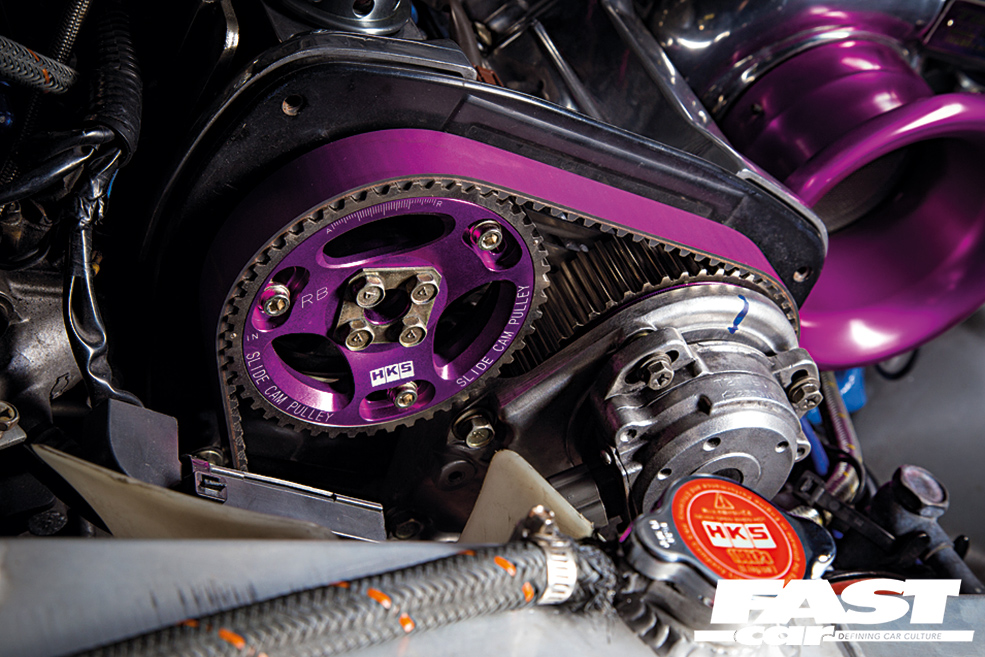
RB26DETT Cylinder head upgrades
As it was designed for race use, the RB26 head is a great bit of kit from the factory. It’s built to safely handle high rpm and flow well. With the correct upgrades the airflow and rpm limits can go sky high; upwards of 10,000rpm and 2000bhp in fact.
You can put RB26 cams in to two categories, low lift and high lift. While the high lift ones have a massive advantage when it comes to power, it also comes at a big cost increase.
Milder low lift cams are generally made to be drop-in. Built to be in use with the standard valve springs in an unmodified head, there’s also no need for valve pockets in the pistons. These are perfect for standard bottom end RB26 setups, They can still give big gains in power, up to 20% on some setups. However, for really high airflow, things get expensive.
Beyond around 9mm valve lift, the cylinder head needs machining to clear the cam lobes. High lift cams like those also need uprated valve springs and retainers. Depending on specs, most of these high lift cams also need valve cutouts in the pistons. As you may have already worked out, this should all be done as part of a full engine build.
While the cylinder head is fully dismantled, adding an external oil drain from the head to the block is a wise move. Cylinder head porting can also give massive flow increases. People have seen gains of over 100bhp at the same boost level even on 500bhp RB26s by going from standard to a well ported head and some drop-in low lift cams.
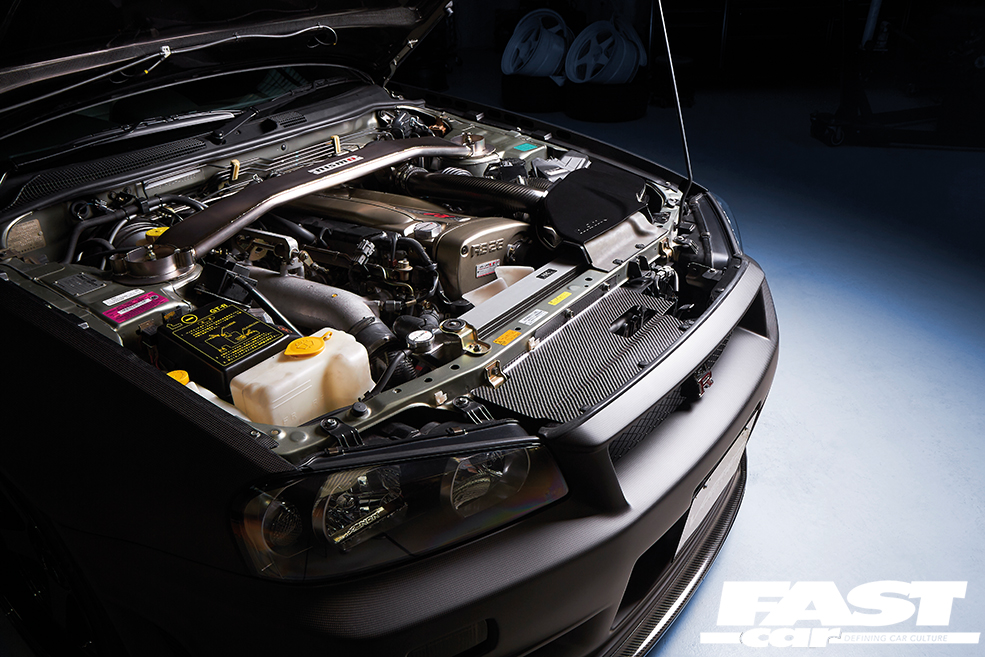
Bottom end upgrades
The standard RB26DETT bottom end is strong. The short stroke design means it’s happy to rev, but of course, things can be drastically improved. It’s safe to say a good condition standard bottom end is reliable even at 600bhp. Many people have pushed them further, but longevity will suffer.
When it comes to upgrades, certain things are considered vital, such as an uprated oil pump from the likes of Nitto, JUN. For the rotating assembly, you have to make the decision between sticking to 2.6ltr or fitting the stroker kit. The former allows allows you to keep the standard crankshaft if you wish. Both of these don’t drastically increase capacity, generally just to 2.7 or 2.8ltr, but any capacity increase will help torque and turbo spool rpm.
If you want a serious capacity increase, the way to go is an RB30 block. This gives you 3 liters when using the standard crankshaft. A Nitto stroker kit will take it out to 3.2ltr, and Spool have a kit to go to a massive 3.4ltr, making the RB a real torque monster.
Another wise addition to any big power RB is a PRP engine cradle. This helps the standard main cap brace prevent cap walk at high power and rpm.
If you want the ultimate RB though, it’s time for a billet block from Bullet. The fastest GT-R in the world, KING32, makes over 2000bhp using a Bullet RB30 block and a Nitto 3.2stroker kit. If you’re crazy enough, so could you!
For more advice on Skyline GT-R tuning, check out our model-specific tuning guides:

